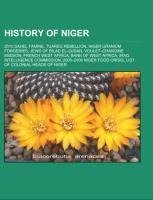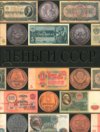
History of Niger
Source: Wikipedia. Pages: 58. Chapters: 2010 Sahel famine, Tuareg Rebellion, Niger uranium forgeries, Jews of Bilad el-Sudan, Voulet-Chanoine Mission, French West Africa, Bank of West Africa, Iraq Intelligence Commission, 2005-2006 Niger food crisis, List... Viac o knihe
Produkt je dočasne nedostupný
16.98 €
bežná cena: 19.30 €
O knihe
Source: Wikipedia. Pages: 58. Chapters: 2010 Sahel famine, Tuareg Rebellion, Niger uranium forgeries, Jews of Bilad el-Sudan, Voulet-Chanoine Mission, French West Africa, Bank of West Africa, Iraq Intelligence Commission, 2005-2006 Niger food crisis, List of colonial heads of Niger, Soninke Wangara, Sultanate of Damagaram, Niger Movement for Justice, Colony of Niger, Kaocen Revolt, Azalai, Kel Owey, Dendi Kingdom, Ag Mohammed Wau Teguidda Kaocen, Arewa, Bura culture, Bura archaeological site, Senegambia and Niger, Battle of Lougou, Upper Senegal and Niger, Sarraounia, Konni, Niger, United Nations Security Council Resolution 148, Djermakoy, Sultanate of Agadez. Excerpt: A large-scale, drought-induced famine occurred in Africa's Sahel region and many parts of the neighboring Sénégal River Area and Horn of Africa from February to August 2010. It is one of many famines to have hit the region in recent times. The Sahel is the ecoclimatic and biogeographic zone of transition between the Sahara desert in the north of Africa and the Sudanian savannas in the south, covering an area of 3,053,200 square kilometers. It is a transitional ecoregion of semi-arid grasslands, savannas, steppes, and thorn shrublands. The neighboring Sénégal River Area contains various vegetation types and covers parts or all of Mauritania, Mali, Senegal and Guinea. It has also had very low rainfall over the last year according to the UN, NGOs and the Senegal River Basin Development Authority. Sudan set a new temperature record of 49.7°C (121.3°F) on June the 22nd, in the town of Dongola. Famine and food shortages were present in the following countries during 2010 after heavy rains hit the region in late 2009, followed by a heat wave: Eritrea, the Sudan, the Niger, northern Nigeria, northern Cameroon, Chad, Senegal, Burkina Faso, Mauritania, Mali, Ethiopia, northern Kenya and Djibouti, as well as in parts of the neighboring Sénégal River Area. In December 2009, both USAID and several NGOs predicted an increased food insecurity situation in more of the southern districts of Mali as compared to the same time the previous year. More than a century of rainfall data in the Sahel show an unusually wet period from 1950 until 1970 (positive index values), followed by extremely dry years from 1970 to 1990 (negative index values). From 1990 until present rainfall returned to levels slightly below the 1898-1993 average, but year-to-year variability remains high. Map showing mean rainfall (mm) for the dry season (May 1-September 30) in West Africa. Period 1995-2006. Based on NOAA/CPC Climatology Method Rainfall Estimates. Africa Rainfall Climatology (CPC ARC) Series. Recent "G
- Vydavateľstvo: Books LLC, Reference Series
- Formát: Paperback
- Jazyk:
- ISBN: 9781156773949


 Anglický jazyk
Anglický jazyk 



 Ruský jazyk
Ruský jazyk 





